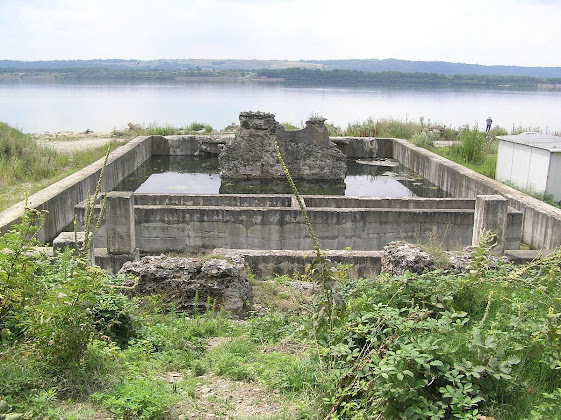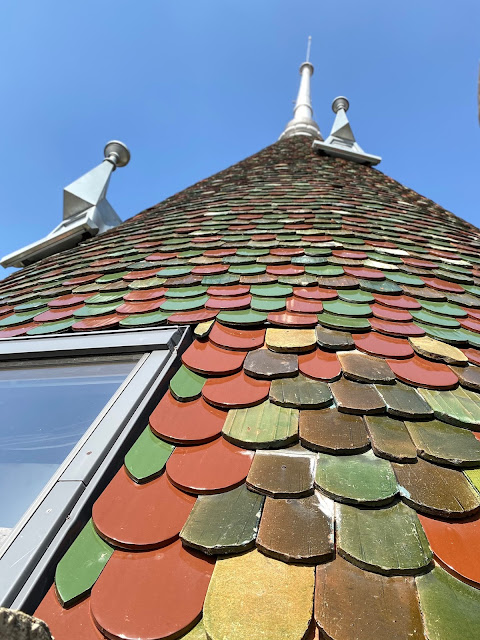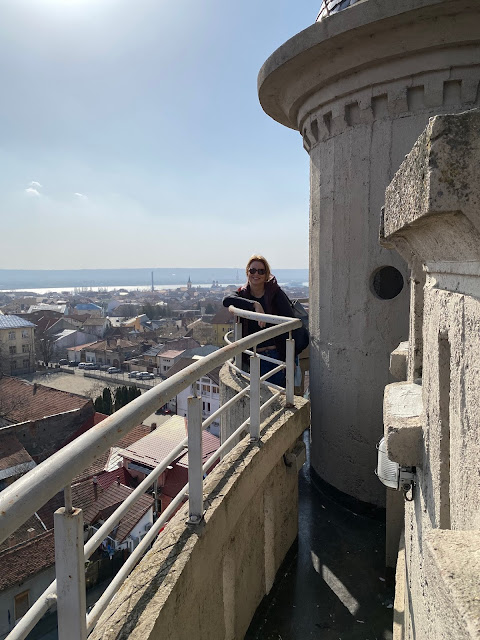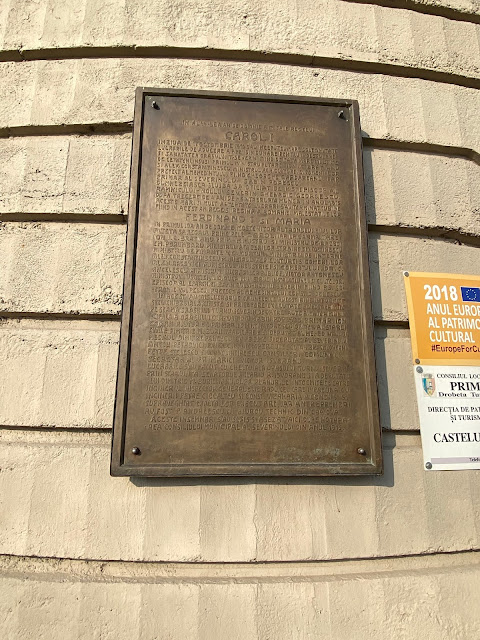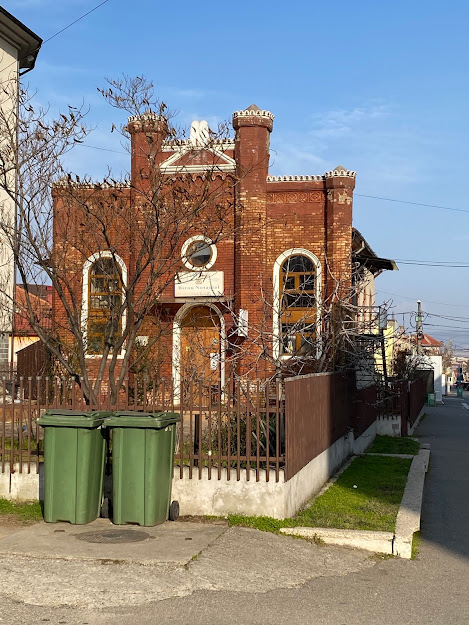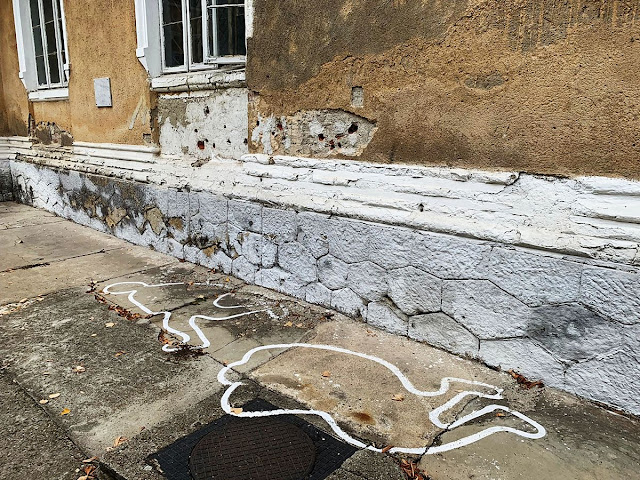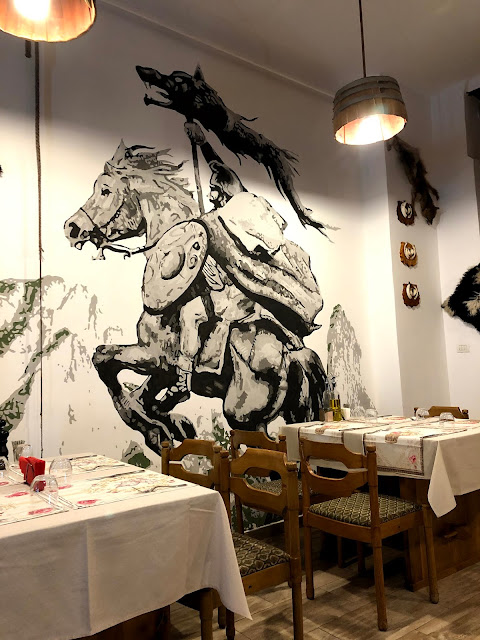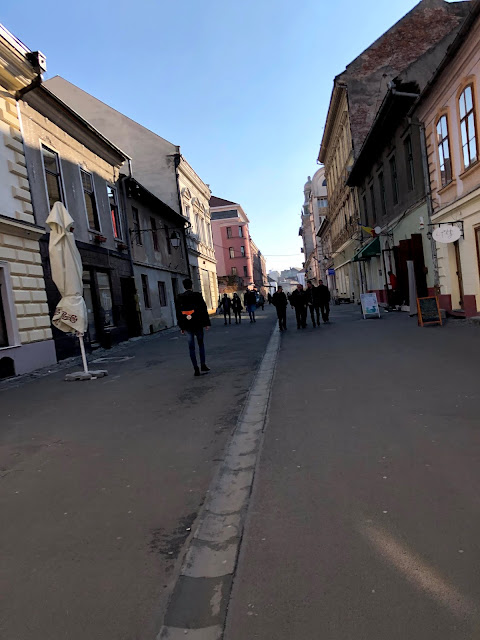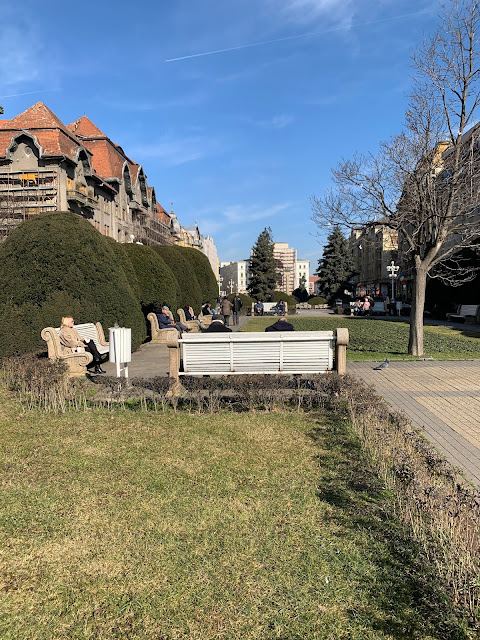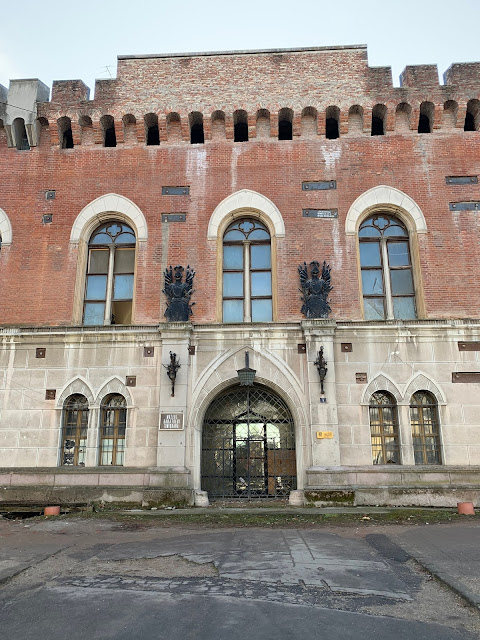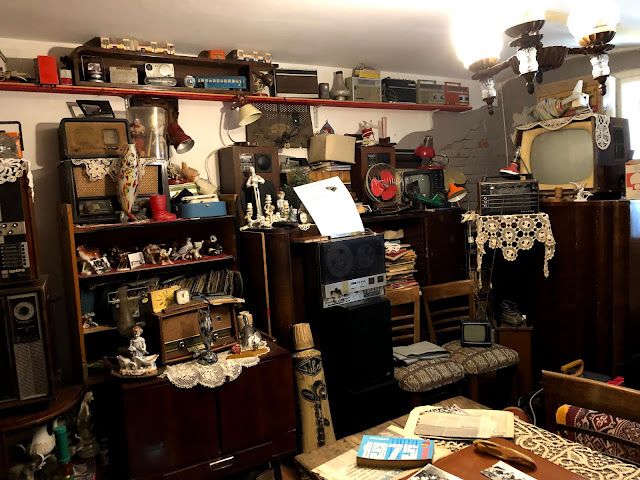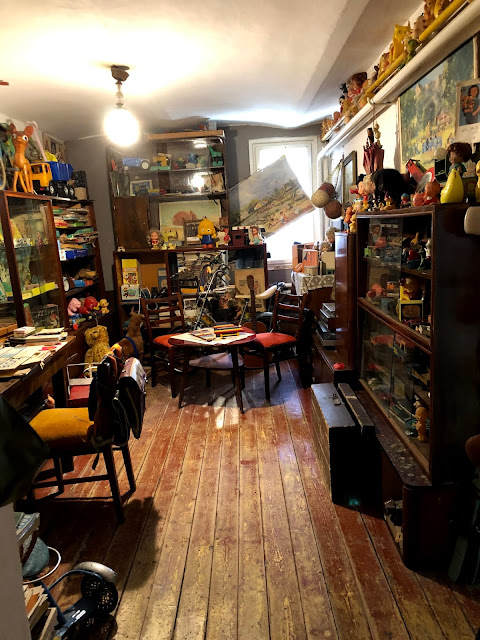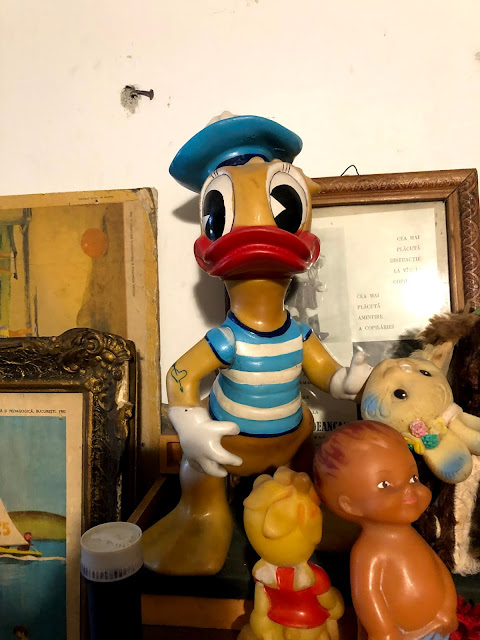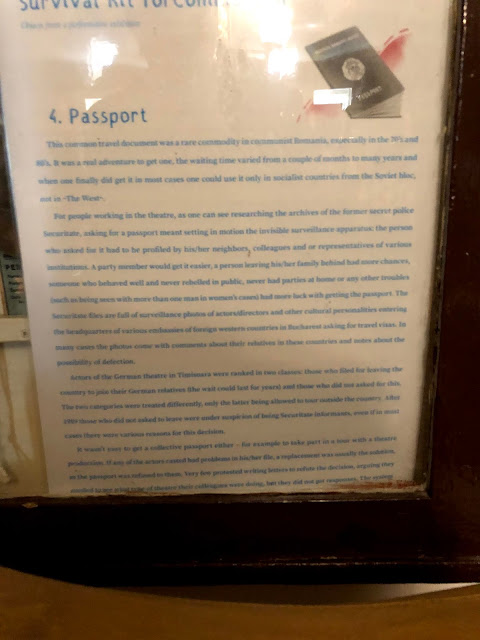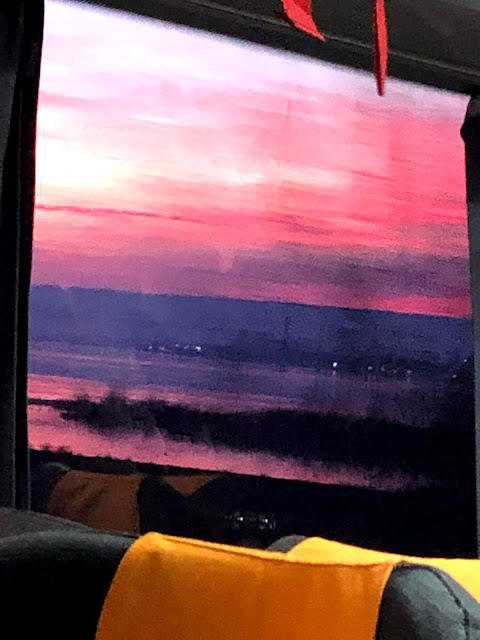Drobeta-Turnu Severin
Well, I apologize for my extended absence, its been a year since I've been able to travel through my Romanian host country. We were locked down on the base, unable to leave for any reason (but I found a 'need' to escape periodically regardless and much to the disdain of the less than stellar leadership). Anyone who actually 'knows' me understands my dislike for being told what I can and cannot do so this should come as no surprise. Telling me I can't do something is EXACTLY the reason I'll do it.
I'm sorry if you're offended but I'm glad this COVID farce is over. The pandemic debacle needlessly impacted everyone's ability to live a normal life. Fortunately for me, the Romanians don't have time for the silliness Americans allowed the government to put them through. Here, people actually have to work or they starve. Not like in the US where the government pays you more to stay at home than getting your butt to work. Romanians live day-to-day and the cows, pigs, chickens, and crops don't care about politics.
In October, I kinda moved out of the dormitory where I had spent 18 months and into an apartment in downtown Caracal. It was a one bedroom on the fourth floor (there's no elevator) but the exercise was good. I told the commander I wasn't going to give up my dormitory room until the Navy paid me to live off-base. From October until May 1st, I was paying out of pocket for my apartment. It was well worth the investment in retaining my sanity.
As soon as we were able to leave - I was gone! In March, I grabbed my good friend and neighbor Lindi, the base 'Resiliency Counselor, and we headed west to the city called Drobeta-Turnu Severin. It's a metropolis about 2.5 hours west on the Danube, bordering Serbia (no Lindi, we cannot go to Serbia right now). She pestered me the entire day about 'always wanting to go to Serbia' but the politics at the moment didn't permit us crossing any borders. The main reason I wanted to visit Drobeta was the beautiful water tower in the city center. I had seen pictures of it before but our Galley Manager decorated the dining hall with an array of Romanian landmarks. The great water tower of Drobeta-Turnu Severin is one of them. He purchased a large (36" x 48") canvas picture of it and had it hung in the dining area - just taunting me at every meal.
Let me run through a short history lesson on this vital city with a storied past. I don't believe you can truly appreciate the exploration of new sites without understanding even a brief history of how we got to where we are today.
Ancient Times
During the 7th century BC, Greek sailors reached the lower Danube River from the Black Sea and sailed upstream, conducting trade with the peoples living along the river. They became very familiar with the river’s lower course and named it the Ister.
Just after the the first century AD, the Romans marched north and east from Italy, conquering every land which stood in their way. After laying siege to what is now Bulgaria, they reached the Danube River and set their sights on the lands beyond this great river. It was here in this region they crossed the deep waters into what was at the time Dacian territory. At this location the Danube is about 4,000 feet (1,200 meters) across. Soon after crossing the river, they built their first city in this foreign land. The city was called Drobeta by the Romans. The Danube served as the northern boundary of the vast Roman Empire and was called the Danuvius. A Roman fleet patrolled its waters, and the strongholds along its shores were the centers of settlements, among them Vindobona (now Vienna, Austria), Aquincum (Budapest, Hungary), Singidunum (Belgrade, Serbia), and Sexantaprista (Ruse, Bulgaria).
The great tower which supplied the 'Turnu' part of the city's name stood on a small hill surrounded by a deep moat. Near Turnu Severin are the remains of the celebrated Trajan's Bridge, the largest in the Empire. The Romans built the bridge in only three years (103–105 AD). The famous architect Apollodorus of Damascus, designed this bridge which, at the time, was considered by many as the most daring work in the Roman world. Apollodorus was Trajan's favored architect and engineer. He designed and oversaw the construction of the Forum, Markets, and Temple, and Column of Trajan (the first monument of its kind), and the Stadium of Domitian within the city of Rome. Outside the capital, Apollodorus built bridges across the Danube and the Tagus in Spain for Emperor Trajan. The Trajan's column in Rome is incredible to view and the deconstructed actual size copy in the Museum of Romanian History in Bucharest is amazing. A previous blog entry covers my visit to the museum and this great artifact of ancient history.
1907 reconstruction of Trajan's Bridge by engineer E. Duperrex.
Built on 20 pillars of stone blocks, when completed the bridge spanned 3,724 feet (1135 meters), was 48 feet (14.55 meters) wide, and 61 feet (18.60 meters) high. Incredible to imagine a bridge 3/4 mile long and the height of a two story home built across a strong flowing river, during a time when there were no machines like we have today. Each bridge head had its own monument, whose remains you can still see on both sides of the Danube, like the one seen below here in Drobeta.
The Romans used oak lumber harvested from nearby forests for the wooden parts of the construction. The bridge had twenty arches supported by stone pillars. Only two of them are still visible at low water. The remaining pillars were demolished in the early 20th century to allow easier access down the Danube River. I still find it hard to imagine demolishing a 2,000 year old structure. I understand economics and logistics and the importance of trade but...there must be a way to accomplish both.
From a strategic perspective, Drobeta became vital to the Empire. The construction of the bridge created a town at the crossing of land and water roads which led to the north and south of the Danube. It was the first real urban center in the region and the third in Dacia after Sarmizegetusa (refer to my December 2019 blog) and Apullum (refer to my Alba Iulia blog entry).
During the 20 year reign of Emperor Hadrian (117–138 AD), the settlement was declared a 'city' in 121 AD. The population had reached 14,000. During the reign of Septimius Severus (193–211 AD), the city was raised to the rank of a 'colony' in 193 AD. This title gave its residents equal rights with citizens of Rome. By the middle of the 3rd century, Drobeta had a population of almost 40,000 inhabitants, a large settlement at the time.
It was a thriving city with several temples, a large basilica, a theater, a forum, a port, and guilds of skilled craftsmen. After the retreat of the Roman administration from Dacia in the 4th century (covered in a previous blog entry), the city was preserved under Roman occupation as a bridge head on the north bank of the Danube until the 6th century. The Huns destroyed the bridge during their invasion in the 5th century, but because of its strategic importance, Justinian I (527-565) had it rebuilt.
Medieval Age
The fortress of Severin was built by the Kingdom of Hungary during the reign of Ladislaus I (1077–1095) as strategical point against the Second Bulgarian Empire. Two famous rulers of then Wallachia, Litovoi (1210-1280) and Basarab I (1270-1351) died at this fortress.
After the fall of Constantinople to the Ottoman Empire in 1453, they began a crusade of attacks on the fortresses along the Danube. In 1524, after a devastating attack by the Turks, led by Suleiman the Magnificent, only one tower of the Severin fortress was left standing. This led to the naming of the city Turnul lui Severin (Tower of Severinus). The Ottoman Empire seized the city in 1524.
Severin's name was taken in memory of Severinus of Noricum, who was the patron saint of the medieval colony of Turnu. Severin Fortress was the most important strategic redoubt on the Danube. Its conquest meant to gain an important bridgehead in the region.
Severin was under Ottoman rule until 1829, except for a brief period of Wallachian occupation between 1594 - 1599, and then an Austrian one from 1718 - 1738.
For nearly 300 years the fortress was continually rebuilt after each battle to defend Wallachia from the Hungarians and Turks. After gaining freedom from Ottoman control as a result of the 1829 Treaty of Adrianople, Wallachia decided to rebuild the present city. In 1841, Severin became the capital of the county and in 1851 became a city. As a major port on the Danube, the freedom of trade facilitated the entry of goods by boat from Vienna and the exchange of material necessary for further economic development.
Modern Times
In 1914, the Water Castle (Castelul de Apă) was opened. Considered an emblematic monument to the people of Severin, it gave identity to the city by being built in one of the major traffic roundabouts of the settlement. In 1968, Turnu Severin became the capital of the county and experienced a steady economic, urban, and social growth. In 1972, the name of the ancient Drobeta was added to the city's name, making it Drobeta-Turnu Severin. And here we are now, 2021.
Driving up to the tower is an awesome experience. Turn the corner, and there it is in all it's wonderment. Definitely worth the two and a half hour drive.
We parked the car and walked the short distance to the tower. After paying our nominal fee to visit the castle, we viewed the small local traditional Romanian museum on the bottom floor and started our climb up the hundreds of stairs on our way to the top.
Climbing the stairs, we got to the next open floor which housed the history of the Water Castle and the city water distribution system.
Looking up from this level, you can see the inside of the structure of the roof. It's amazing to behold and the next step is out to the observatory deck, another full story straight up the spiral stairs.
As soon as you get to the rooftop observatory, the first thing you notice is the exquisite roof tiles. Multi-colored and expertly placed, it is a sight to behold.
Who's that coming around the corner - it's Ms. Lindi enjoying the view of Drobeta-Turnu Severin and Serbia on the distant shore.
The Water Castle was not a disappointment and I would recommend everyone come visit, it is worth the short drive from Caracal.
At the entrance to the tower is a big bronze plaque honoring King Carol's involvement and visit to Drobeta in getting the Water Castle built over a hundred years ago. If I feel rambunctious one day, I'll translate it for my viewers.
Leaving the castle, we took a walk up the city esplanade where there were multitudes of vendors celebrating the upcoming Martisor holiday (see a previous blog about this Romanian holiday filled with Spring, romance, and love for women). You'd hardly know COVID was even a thing here.
I couldn't just walk away without taking a peek back at the site we had just left - towering over everything around it.
Every Romanian village has a great park. I'll be heading back here when the grass is green, the trees are filled with leaves, and the flowers are in full bloom.
Walking back toward the castle. There are several sights in the immediate vicinity of here worth visiting. This modern church located behind the castle, especially the mosaic fresco in the front portico, is amazing.
Call me weird (and I know many of you do) but I love the architecture you find all over Romania.
The Palatul Teodor Costescu theater is a beautiful building, I wish it was open so I could see the inside. I'm sure it is equally exquisite.
Next we took a walk in the park. I saw some statuary which I always love to look at.
Located in ancient Dacia, it is only appropriate to have a bust of King Decebal, the greatest leader of this region.
And it kinda sorta makes sense to have Emperor Trajan who ruled this area but wasn't he the one who conquered the Dacians 😳 ?
And what walk in the park would be complete without seeing some local Gypsies enjoying the great Spring weather?
Finishing up our time in this wonderful city, we decided to stop for dinner at a local eatery - to get some Italian food. Some Caprese salad and bruschetta followed up with a seven-layer lasagna then finished off with a cappuccino. Great way to end the day with a good friend in a great city.


Across the street from the Italian eatery was a church all lit up at night, I couldn't help but stop and take a look.

Here's a little history about this city and the Water Castle for anyone who is as interested as I was 💙
The Water Castle is a real symbol of Drobeta-Turnu Severin. It has become not only the landmark for a tourist spot of this Danube bank city, but also one of the most important attractions for foreigners like us. The Water Tower was approved by the city council on June 10, 1910 as part of the city’s water filtration and supply system. It is built out of reinforced concrete and was designed by Romanian engineer Elie Radu, who also worked on Bucharest’s water supply network. The castle was going to be placed on the highest point in town, at 340 feet or 104 meters for an advantageous distribution throughout all areas of the city. At almost 100 feet tall (27 meters) and 35 feet (10 meters) in diameter, it's the city’s tallest building.
The structure was finished in 1913 and inaugurated a year later when the entire water supply system for the city was completed. It was designed with two bunk tanks for a total capacity of over 35,000 cubic feet (1025 cubic meters) of water or around 262,000 gallons. The average American water tower holds nearly one million gallons of water.
Because of its height, during WW I, the castle was used by the German army as an observation point it served as an observation point for firemen and for the military. This building went through both World Wars with no consequences.
During WW I, the Germans had people in the upper cupola keeping in touch with the escadrille commander over Severin and directing the places to be bombarded. Over time, the holding tanks in the castle became insufficient and a third tank installed. It was finished in 1964 and was placed in the bridge space above the top floor of the building.
It fulfilled this role until 1980. Then the tanks were emptied and the tower building was converted into offices for the company administering the water supply and sewage for the city. In December 2010, the Drobeta-Turnu Severin city hall obtained funding from the EU to restore the Water Castle. They turned it into an ‘Arts’ Castle, hosting various local exhibitions, a museum covering the history of Drobeta’s water supply process, and a place to admire the city views.
The Water Castle is built on various levels housing exhibit spaces, an art gallery, and a tourist information point on the ground floor. There are two ways to get to the top of the tower, either the short one, with an elevator, or by climbing the 400 hundred steps, an effort that is worth the climb.
Each floor is unique in its own way. You can find out about the history of the tower through the art work from the time when the entire town was supplied with water from here. Paintings, inscriptions, and many sculptures all tell a story and sort of bring you back to the old days. The restoration was completed in 2018.




